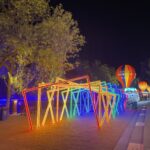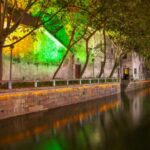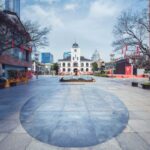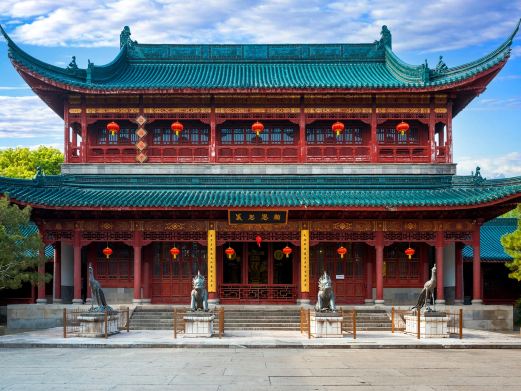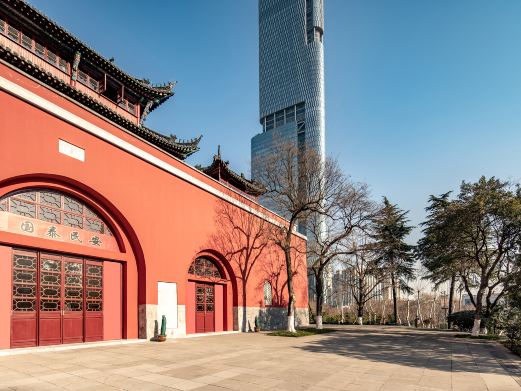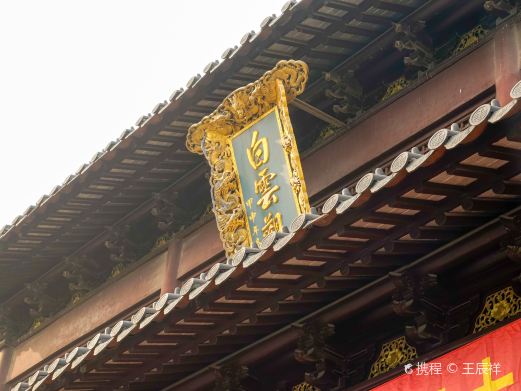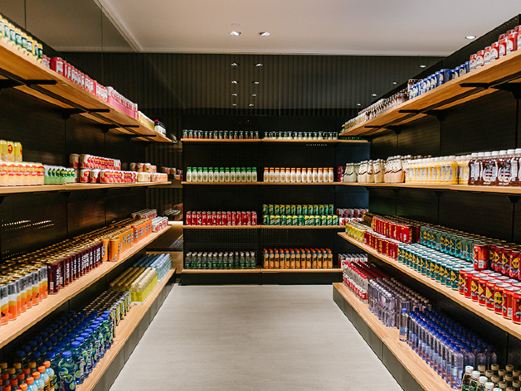Guanqian Street is located in the heart of Suzhou City, not far from Suzhou Railway Station, and is a commercial street established during the Qing Dynasty. It has been transformed into a pedestrian street, approximately 800 meters long, and together with the roads radiating from it such as Taijian Alley and Bifeng Square, it is a famous snack street and commercial district in Suzhou, akin to Nanjing’s Confucius Temple and Shanghai’s City God Temple.
The first reason to visit Guanqian Street is for its cuisine, where century-old shops gather. Songhe Building Restaurant (No. 72 Taijian Alley) has a history of over 200 years and has even appeared in the novel ‘Demi-Gods and Semi-Devils’ as the place where Qiao Feng and Duan Yu pledged brotherhood. The authentic dish of squirrel-shaped mandarin fish in Suzhou cuisine must be tasted at Songhe Building, which is the signature dish of the restaurant. Other dishes such as stir-fried shrimp, braised eel in hot oil, and Dongpo pork are also delicious. Deyue Building (No. 43 Taijian Alley) is the restaurant featured in the old movie ‘Little Deyue Building’, also known for its traditional Suzhou cuisine. However, the high prices of these two restaurants, with a single dish costing over a hundred yuan, deter many tourists. The sauced pork at Lu Gaojian (No. 8 Guanqian Street) and the wonton at Lvyung混沌 (No. 84 Bifeng Square) are much more affordable. In the evening, Guanqian Street is brightly lit, and after a satisfying meal, one can go shopping and stroll around. Huang Tianyuan Cake Shop (No. 86 Guanqian Street) is famous for its date and yam cake, which is mentioned in ‘Dream of the Red Chamber’, and对面的Caizhi Zhai (No. 91 Guanqian Street) is known for its zongzi sugar, both of which can be bought as gifts to share with relatives and friends. You can also find local specialties such as silk scarves and Suzhou fans, as well as gold shops, silver jewelry shops, optical shops, and leather shoe shops. Large shopping malls like Dayang Department Store (No. 1331 Renmin Road), Renmin Mall (No. 22 Beiju Road), and Changfa Building (No. 108 Lintun Road) offer affordable clothing; on Guanqian Street, you can also visit the Xuanmiao Taoist Temple located right in the middle of the street, from which Guanqian Street gets its name. The temple was first built in the second year of the Xian Ning era of the Western Jin Dynasty (AD 276) and was rebuilt in the sixth year of the Chunxi era of the Southern Song Dynasty (AD 1177). On the west side of the main hall, the Sanqing Hall, you can see the ‘treasure of the temple’, a stele of Laozi, which is a work by the Tang Dynasty artist Wu Daozi. The inscription above the portrait is a tribute by Emperor Xuanzong of Tang, written by the great calligrapher Yan Zhenqing, and engraved by the master carver Zhang Yun Di of the Song Dynasty. It is open all year round and is accessible 24/7.Guanqian Street
Guanqian Street is located in the heart of Suzhou City, not far from Suzhou Railway Station, and is [...]
